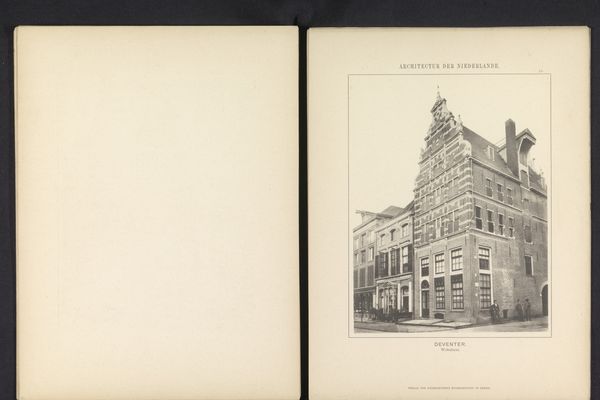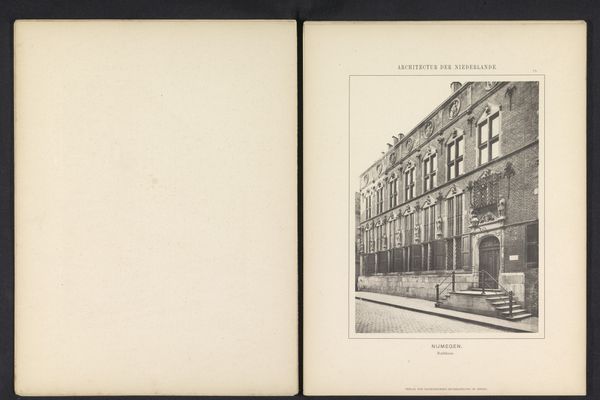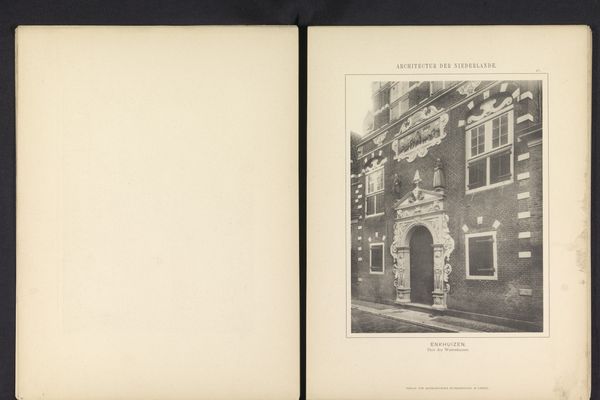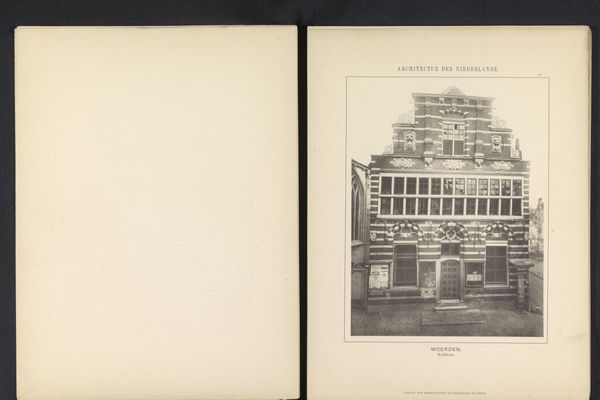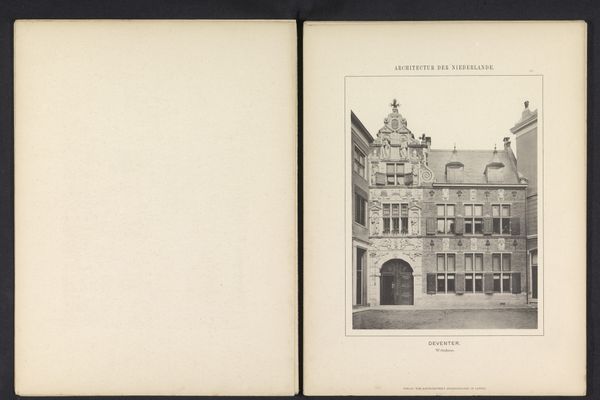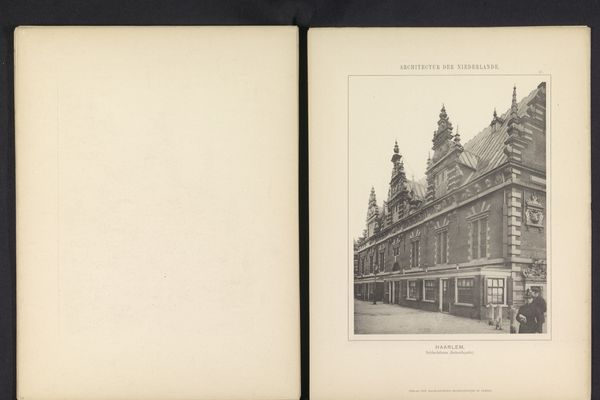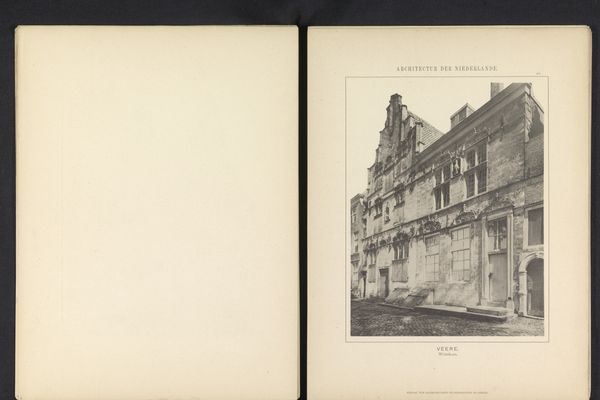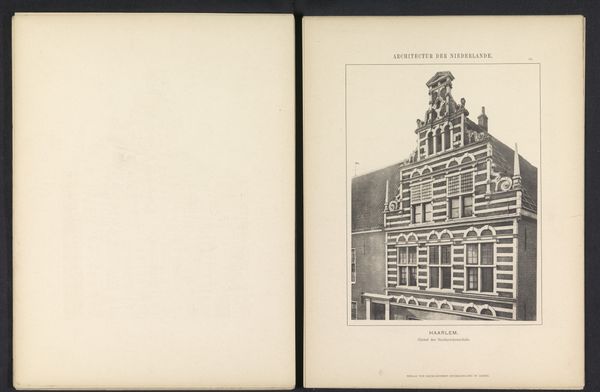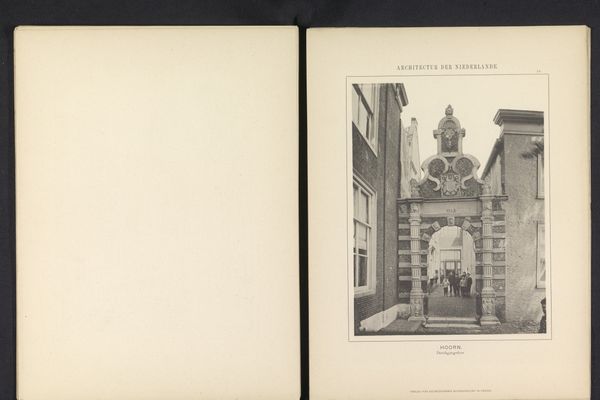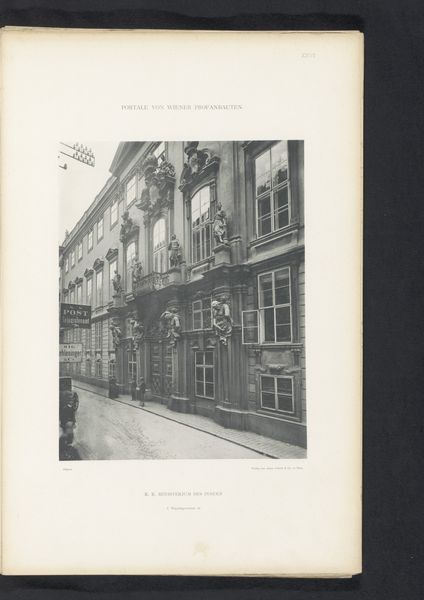
Gezicht op het pand de Steenrotse aan de Dwarskaai in Middelburg before 1894
0:00
0:00
anonymous
Rijksmuseum
print, photography, architecture
#
dutch-golden-age
# print
#
photography
#
cityscape
#
architecture
#
realism
Dimensions: height 257 mm, width 197 mm
Copyright: Rijks Museum: Open Domain
Curator: This photograph, titled "Gezicht op het pand de Steenrotse aan de Dwarskaai in Middelburg," was taken before 1894 and now resides in the Rijksmuseum collection. It presents a cityscape rendered through the lens of realism and techniques from the Dutch Golden Age. Editor: My immediate impression is of gravity, a still moment perfectly captured in monochrome. The light emphasizes the architectural details, the windows staring back like vacant eyes, and evokes the memory of past inhabitants. Curator: It's interesting that you mention the 'vacant eyes' aspect because windows are seen as the soul's mirror in the symbolism that relates to a person's gaze of openness to an experience within a particular cultural understanding of an experience. Windows frame perspectives on the outside. Do you sense such reflection on the outside or within the building? Editor: The strict orthogonal geometry—the verticals and horizontals dissecting the plane, gives the photograph structure. It’s so rigid. What of that structure says the most to you in thinking about cultural expression in the moment and long-term in terms of memory? Curator: In Northern European art, we're talking about the way domestic architecture echoes not just social class, but of communal identity and individual protection. Those stories, etched in stone and frame are reflective of status and moral integrity. The formal style creates an illusion that history is solid. But its rigid portrayal, especially from the Golden Age, makes it so compelling still. Editor: The photograph has very precise qualities, hasn’t it? It shows how photographers during that time would have needed a full comprehension and capability to present not just a reproduction of the image but the idea that light itself can reflect not just surface, but a conceptual history through what architecture comes to represent. The image isn’t so objective. Curator: It almost has an archetypal quality of time suspended. These images are powerful not only because they demonstrate photography as art form, but it makes clear its influence as an anchor for collective remembering. Editor: The interplay of light and shadow provides a narrative of change across that building, as well. Curator: Precisely, that sense of duration—its testament! Editor: Absolutely, it adds another layer. This image resonates deeply now.
Comments
No comments
Be the first to comment and join the conversation on the ultimate creative platform.
